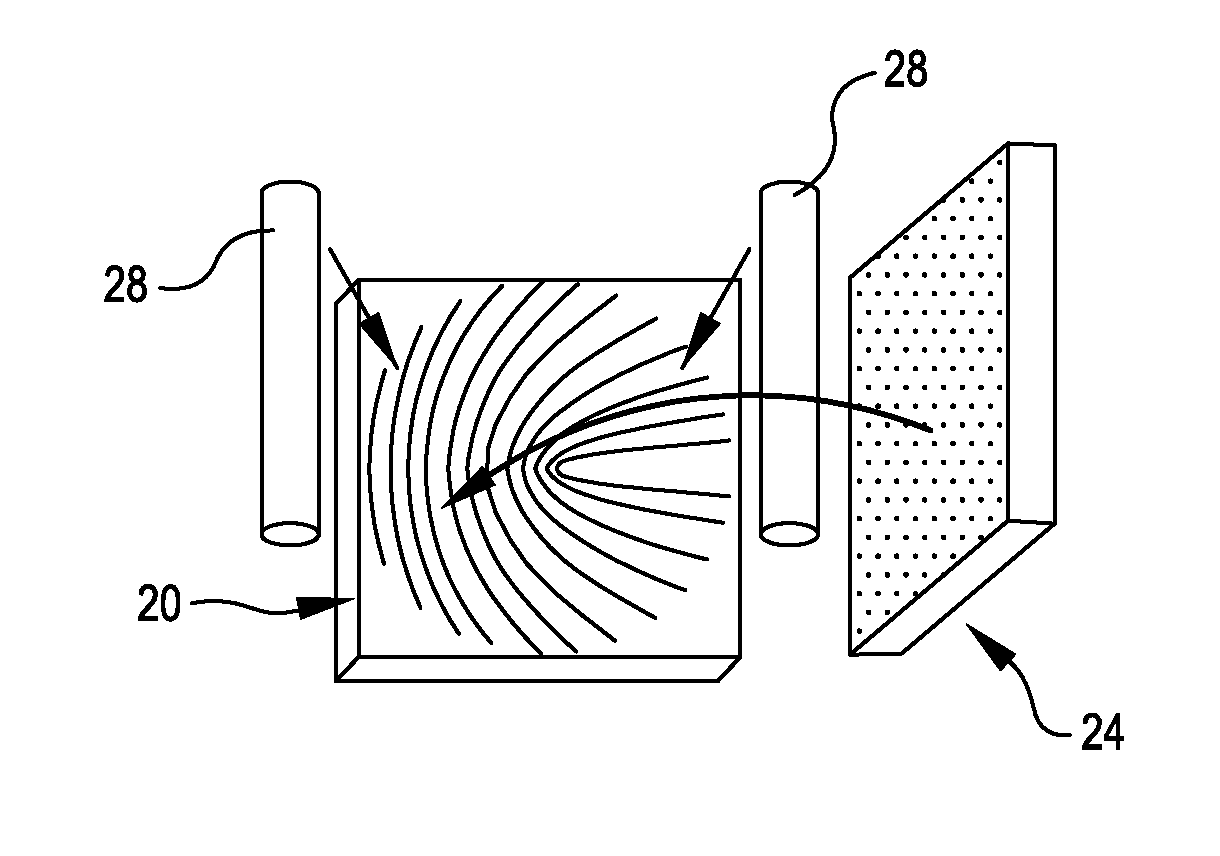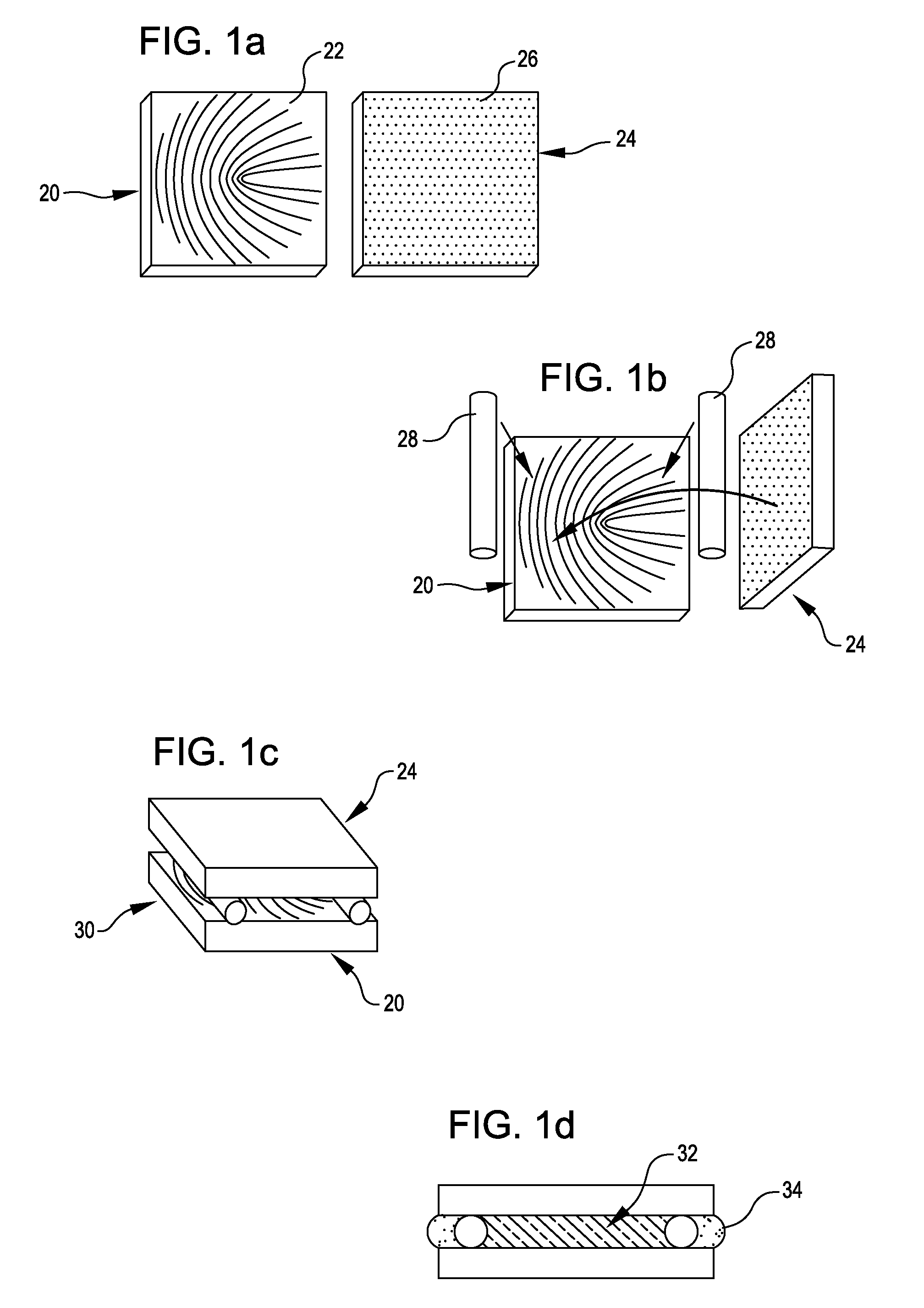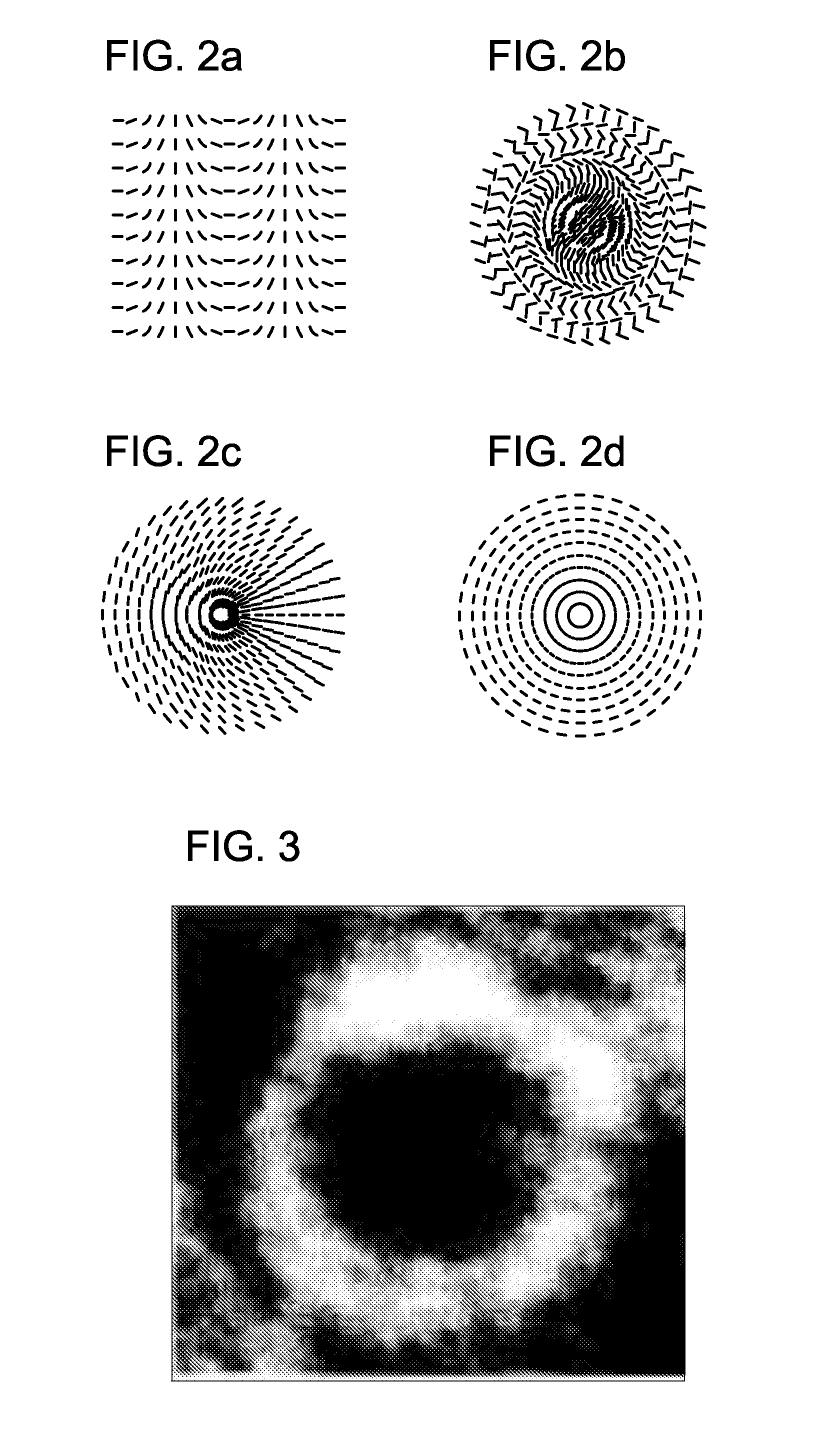Liquid crystal geometrical phase optical elements and a system for generating and rapidly switching helical modes of an electromagnetic wave, based on these optical elements
a technology of geometrical phase optical elements and electromagnetic waves, which is applied in the field of optical elements, can solve the problems of limiting the application of optical components to the mid-infrared domain, not allowing any switching, and holographic components normally have the drawback of simultaneously generating a plurality of diffraction orders, so as to achieve the effect of fast switching of the helicity sta
- Summary
- Abstract
- Description
- Claims
- Application Information
AI Technical Summary
Benefits of technology
Problems solved by technology
Method used
Image
Examples
Embodiment Construction
[0046]The description of the invention is based on a specific class of geometrical phase optical components, composed of half-wave birefringent means whose optical axis is spatially inhomogeneous in a plane orthogonal to the propagation direction of an incident optical beam, in an embodiment shaped as plates whose optical axis is spatially inhomogeneous in the plane of the plate (referred to below as “half-wave PBOE's”).
[0047]We will consider a plane birefringent plate orientated perpendicularly to the direction z of propagation of the light. It is assumed that the plate causes a phase shift of π (half wave) between the extraordinary and ordinary components of the light, in a homogeneous way throughout the plate, and that the optical axis (for example the “fast” axis) of the plate is inhomogeneous in the transverse plane xy (but homogenous in the direction z). Let α(x,y) be the angle formed by the optical axis of the plate with the reference axis x in the plane xy.
[0048]If we disreg...
PUM
| Property | Measurement | Unit |
|---|---|---|
| wavelengths | aaaaa | aaaaa |
| wavelength range | aaaaa | aaaaa |
| phase | aaaaa | aaaaa |
Abstract
Description
Claims
Application Information
 Login to View More
Login to View More - R&D
- Intellectual Property
- Life Sciences
- Materials
- Tech Scout
- Unparalleled Data Quality
- Higher Quality Content
- 60% Fewer Hallucinations
Browse by: Latest US Patents, China's latest patents, Technical Efficacy Thesaurus, Application Domain, Technology Topic, Popular Technical Reports.
© 2025 PatSnap. All rights reserved.Legal|Privacy policy|Modern Slavery Act Transparency Statement|Sitemap|About US| Contact US: help@patsnap.com



